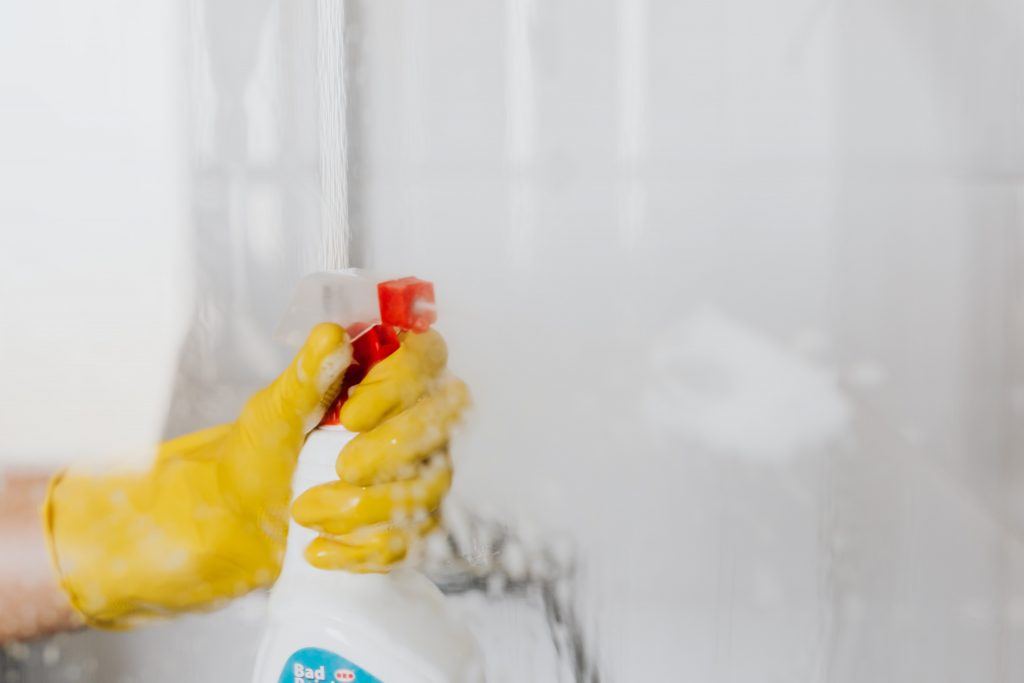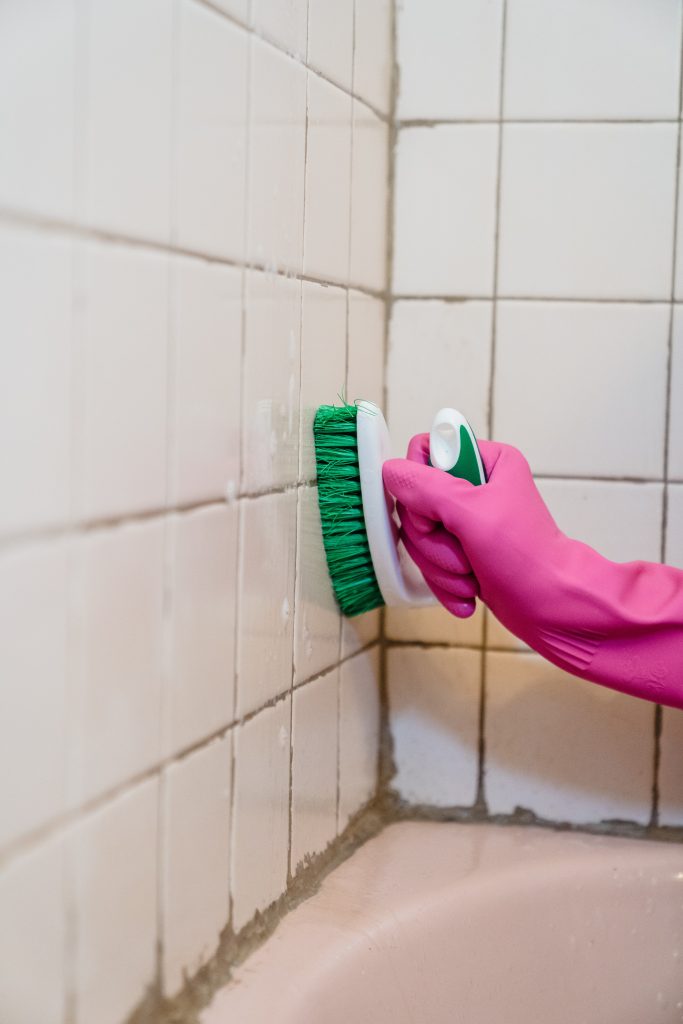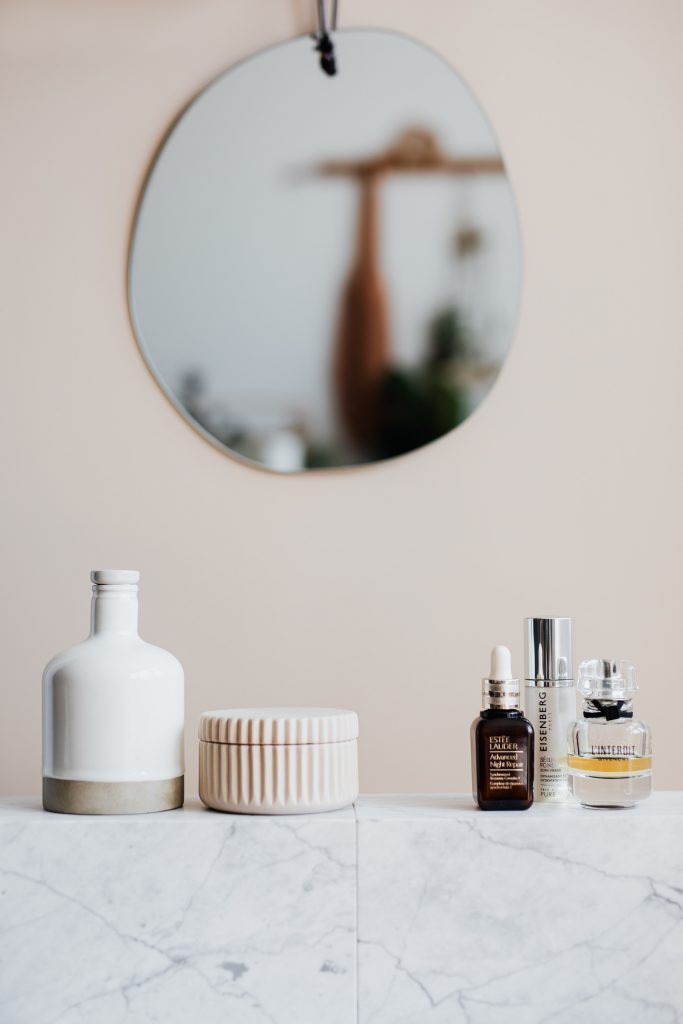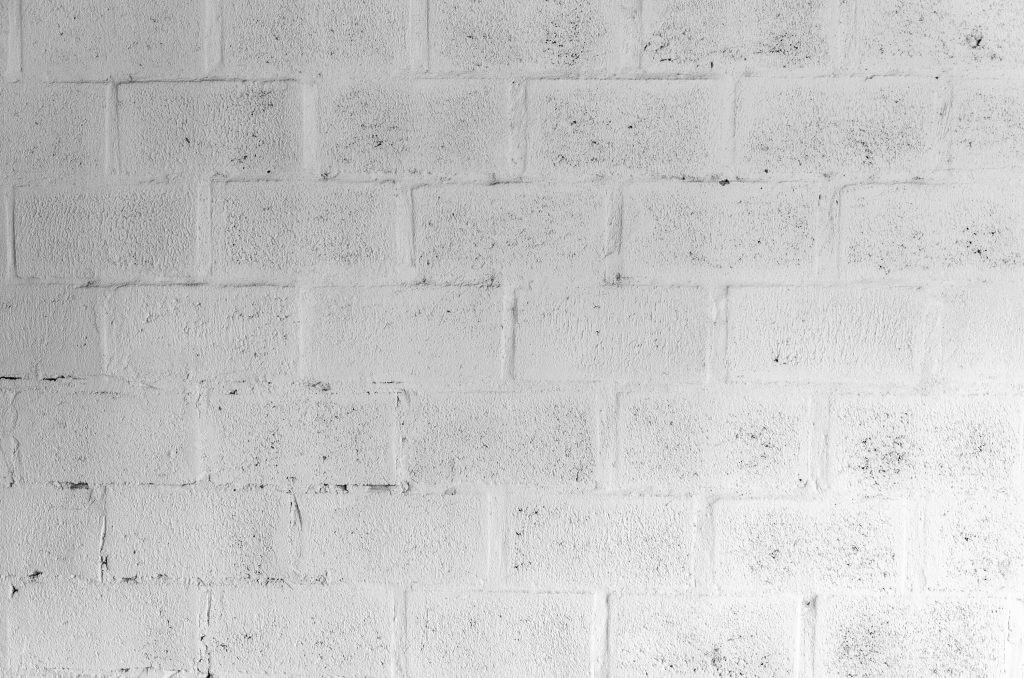Is your shower wall tile looking a little worse for wear? Are you unsure of the best way to clean and restore it? Do you want to know how to clean shower wall tiles for a sparkling result?
Though we’d all prefer that our bathrooms always be clean and comfortable, the truth is that they may quickly become the opposite. Especially if you have tile in your bathroom, the places you go to clean up (like the shower) can quickly lose their luster as grime, soap scum, and mildew accumulate over time.
Tiles that aren’t regularly cleaned can rapidly transform your bathroom from a relaxing haven into a high-priority cleaning priority.
In order to maintain a gleaming appearance in your bathroom and shower, you’ll need to put in some effort to clean the tile and grout. While it may not always be the most pleasant chore, a clean shower wall tile will make the whole bathroom look infinitely better.
To get you started on the right foot, here are some tips on the best way to clean your shower wall tile:
Pre-Treatment Of Scum And Soap Buildup

Before you attempt any cleaning, you’ll need to take care of the scum and soap buildup that’s already settled in.
Begin by running your shower for 5-10 minutes, with the temperature set to the highest setting. A combination of hot water and steam can easily open pores and release dirt particles, making cleanup a breeze.
Once you’ve done that, you can make your own homemade cleaning solution. DIY cleaning product recipes abound on the internet, but not all of them are practical or affordable.
A simple solution of warm water and white vinegar is effective and inexpensive. Try adding baking soda to the mix if a stronger cleaning agent is needed.
Spray The Tiles
Spray the tiles with your cleaning solution, taking care to cover every surface in the shower. Once you’ve finished spraying, let it sit for a few minutes and allow the cleaning formula to do its work. This will soften any dirt and grime built over time and make removing it easier.
To ensure the best results, be sure to pay extra attention to areas that are especially dirty, like corners or crevices.
Scrub The Tiles

After a few minutes have passed, take a non-abrasive sponge or cloth and gently scrub away at the tile grout. Be sure not to use too much pressure, as this can damage both the tile and grout. If necessary, you can use an old toothbrush to get into difficult areas and dislodge tougher residue.
If stubborn areas are still left behind after scrubbing, try using baking soda as a gentle abrasive agent. Simply sprinkle some baking soda on the area that needs more attention, then follow up by using a damp sponge or cloth to scrub it off.
Baking soda is great because it’s gentle enough not to cause any damage while also doing an amazing job of removing dirt and stains from your shower wall tiles!
Rinse and Dry
Once the tiles are dirt-free, you’ll need to rinse off the soap scum and any remaining cleaning solution. If using bleach, be sure to rinse with plenty of water. After the tiles have been rinsed, you can use a soft cloth or paper towel to dry them off the tiles.
You can also use a fan to speed up the process, ensuring that no moisture is left behind.
How to Clean Bathroom Tiles: Ceramic and Porcelain

Cleaning ceramic and porcelain tiles in the bathroom may feel intimidating at first, but it doesn’t have to be! With the right cleaning products and techniques, you can easily clean your shower wall tile and make it look brand new again.
First things first, you’ll want to identify what kind of tile surface is installed in your bathroom. Is it ceramic tile or porcelain tile? This distinction is important because each type of tile’s cleaning techniques vary.
For ceramic tiles, the best way to keep them looking their best is by regular sweeping and mopping. Use a soft-bristled broom to sweep away dirt and debris from the tiles. Then mop with a mild cleaner that won’t damage the surface of the tiles.
Alternatively, a steam mop can help remove any built-up surface grime. Be sure not to use harsh abrasives when cleaning ceramic tiles, as this could scratch or damage their surface.
On the other hand, porcelain tiles require more attention when cleaning since they are more porous than ceramic tiles. Therefore, more prone to staining. You’ll want to use a cleanser specifically designed for porcelain shower tile or one that is pH neutral. So, it won’t strip away any protective sealing on its surface.
For stubborn stains, you may need to apply some baking soda paste or vinegar solution onto the affected area. Leave it for several minutes before wiping it away with a damp cloth or sponge.
In addition to regular maintenance, you should also be sure to seal your ceramic and porcelain bathroom wall tiles every few years to protect their finish and keep them looking great long term. Sealing will help prevent moisture from seeping into the grout lines, which can lead to mold growth over time. Applying sealant isn’t difficult. Just use a good quality sealant according to the manufacturer’s instructions so that everything looks great after it’s done!
How to Clean Bathroom Tiles: Glass, Cement, and Natural Stone

When cleaning glass tiles, the most important thing is to use the right cleaner. An ammonia-based cleaner is usually a good choice as it has enough power to cut through tough grease and grime without damaging the tile’s surface. You can also opt for a gentle all-purpose cleaner if you prefer.
Once you have your chosen cleaner in hand, spray it directly onto the tile or a soft cloth or sponge first. Gently scrub away dirt and residue until you’ve achieved your desired result.
For cement tiles that are particularly grimy or stained, you may need to use a stronger cleaning solution as these can often be difficult to remove with just soap and water alone. To deep clean cement tiles, reach for an oxygen bleach powder mixed with warm water.
An oxygen-based bleach is much safer than traditional chlorine bleach, which can be corrosive in its concentrated form. Once your mixture is ready, apply it to the affected area of the tile. Let it sit for several minutes before wiping off any remaining residue with a damp cloth or sponge.
Natural stone tiles are some of the most beautiful bathroom tiles out there. However, they require special care when cleaning them properly without damaging their surfaces or colors over time. For stubborn stains on natural stone tiles such as limestone or marble, use a natural stone cleaner specifically designed for these stones and an old toothbrush to get into tough spots like grout lines or crevices where dirt tends to accumulate over time.
For best results, follow up by buffing dry with a soft cloth after cleaning is complete to help protect their surface from further wear and tear down the line.
Tips To Keep Your Tiles Clean

Stop waiting for the bathroom to get moldy and covered in soap scum before doing anything about it. It’s possible to avoid taking a dirty shower by following a few simple procedures in addition to regular cleaning.
To keep your shower wall tiles looking as good as new, a couple of tips can help.
Let Air Circulate Inside Your Bathroom
Air circulation is one of the key ways to keep your shower wall tiles clean and free from mold and mildew. By ensuring that air can move freely in the bathroom, you’ll create an environment that’s less hospitable to moisture and fungi. It will also help with odors, as airflow helps odors dissipate instead of lingering in the area.
One of the easiest ways to promote air circulation is to open a window in the bathroom or turn on a fan when showering or bathing. This can also help prevent steam from accumulating on surfaces and walls, which can lead to mold growth over time.
Another simple trick is to leave the bathroom door open when not in use. This lets air circulate through – especially if you have a fan running – while keeping it out of other parts of the house. The result is a better-ventilated space that helps remove humidity, stale air, and allergen particles such as dust mites.
It’s also a good idea to invest in an exhaust fan for your bathroom if you don’t already have one installed. An exhaust fan installed near the ceiling directly above your shower will pull moist air out of your bathroom before settling on surfaces or walls where it could cause damage. This type of ventilation system is more effective than just opening windows since warm, humid air rises and escapes through the exhaust vent rather than lingering around the room.
Finally, you can install natural ventilation systems such as skylights in bathrooms with high ceilings and access points for sunlight. These systems provide natural light during daytime hours and allow fresh air to enter throughout the day while pushing out stale air at night when temperatures drop enough for convection forces to take effect (stale air rises naturally).
Skylights are particularly useful if you live in an area where it’s impossible to open windows due to environmental factors such as noise or pollution levels outside.
Clean Your Bathroom Regularly
Apart from air circulation, it’s also important to clean your bathroom regularly. Doing so can help you avoid the buildup of dirt and grime, which can decrease aesthetics and potentially damage the tiles.
Start by using a soft cloth or sponge with warm water and soap to wipe down surfaces periodically. To remove stubborn dirt and grime, you can use a mixture of baking soda and vinegar for an extra deep clean. You may also want to invest in specific cleaners designed for bathroom tile surfaces so that you don’t have to worry about damaging them over time.
In addition, shower walls are often exposed to higher levels of moisture than other parts of the bathroom, making it especially important to keep them clean. If you notice any mold or mildew forming on your tiles, make sure to address it right away by using a scrub brush with mild detergent. For tougher stains, use a cleaner designed to remove mold and mildew before rinsing with water.
Finally, after cleaning your shower tiles regularly, use a squeegee or microfiber cloth to wipe off excess moisture. It can help prevent soap scum buildup and promote air circulation within the bathroom. This is especially helpful if there is no exhaust fan in your bathroom, as opening windows and doors may not be enough on its own!
Reseal The Grout Every One or Two Years
Resealing the grout between your bathroom tiles every one or two years is a great way to keep them looking their best and prevent water damage. This process helps to fill any cracks and create a protective barrier, which will help prevent moisture from seeping through the tile and into the walls. It can also help reduce mold growth, as bacteria and fungi need moisture to thrive.
To reseal your shower wall tiles, you’ll need an appropriate stenciling kit that includes a sealant of your choice (water-based or solvent-based) and tools such as a grout brush, sponge, trowel, and grout float. Start by using the brush to remove any existing sealant before wiping down the tiles with a damp cloth.
After this, use the trowel to apply a thin layer of sealant along all four sides of each tile joint before smoothing out with the grout float. Then move on to applying sealant within all four corners of each tile area. Make sure that it is evenly spread throughout each area first with your finger before smoothing out with the float.
Once you’ve finished applying sealant between your tiles, take a damp sponge and wipe away any excess residue before allowing it to dry for 24 hours or according to manufacturer instructions. If desired, you can also rubbing alcohol on an applicator pad to shine up further any remaining areas where sealant may have settled.
It’s important to note that resealing grout can be done fairly regularly (every 1-2 years). Before starting this process, you should always check if there’s existing damage or deterioration. If so, more extensive repairs may be necessary, such as replacing cracked or missing pieces before resealing.
Furthermore, be sure to use caution when handling any chemicals associated with this task, as they may be hazardous if not used properly!
Frequently Asked Questions
Q: Can I use a magic eraser to clean shower wall tiles?
A: No, a magic eraser is too abrasive and can scratch the surface of shower wall tiles. Instead, use a soft cloth or sponge with mild detergent to clean your shower tile. For tougher stains, you can use specific cleaners designed for shower tile. However, never mix them with other cleaning products as this could cause damage to the tile’s surface.
Q: How can I remove hard water stains from bathroom floor tile?
A: To remove hard water stains from bathroom floor tile, you can use a mixture of white vinegar and warm water. Spray the diluted vinegar onto the affected tile surface. Let sit for several minutes before scrubbing with a soft sponge or brush and rinsing with warm water. Alternatively, you can also use a specialized cleaner specifically designed to remove hard water deposits from bathroom tiles. Make sure to follow all manufacturer instructions when using any type of product on your tile surfaces.
Q: Can I use white vinegar for a stubborn stain on my bathroom door?
A: Yes, you can use white vinegar to remove stubborn stains from bathroom doors. Start by spraying a solution of 50% white vinegar and 50% warm water directly onto the stain. Let it sit for a few minutes before scrubbing it with a soft brush.
Q: Why is my stone tile turning yellow?
A: Stone tile can turn yellow when exposed to certain chemicals, such as chlorine or other cleaning products. To avoid this issue, use only mild detergents when cleaning your stone tile. Make sure to rinse the area thoroughly with plain water afterward.
Q: Does cleaning tiles require special tools?
A: Not necessarily, but it’s important to use the right cleaning tools for your specific tile material. For example, you may need to use a grout float if you have ceramic or porcelain tiles and steel wool for stone tiles. Be sure to read the manufacturer’s instructions for your specific tile material before beginning any cleaning project.
Final Words
With these tips in mind, you should now be able to keep your shower wall tiles looking shiny and pristine! Cleaning the tile may not always be an enjoyable experience, but with the right tools, it can be much easier than expected. And best of all, it can help make your bathroom look like new again! So take some time out of your day for regular maintenance – it’s worth it in the end!

